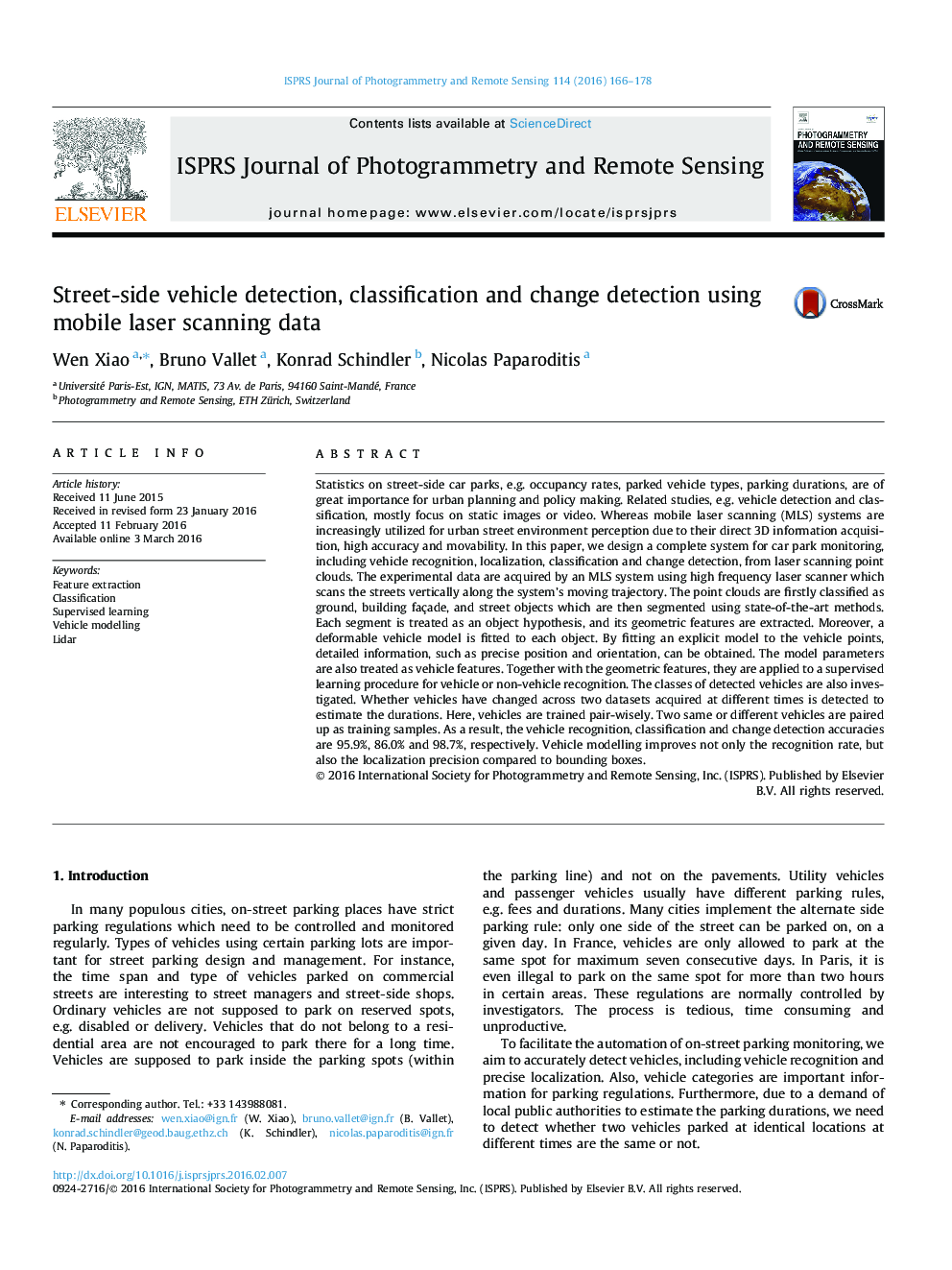| Article ID | Journal | Published Year | Pages | File Type |
|---|---|---|---|---|
| 555874 | ISPRS Journal of Photogrammetry and Remote Sensing | 2016 | 13 Pages |
Statistics on street-side car parks, e.g. occupancy rates, parked vehicle types, parking durations, are of great importance for urban planning and policy making. Related studies, e.g. vehicle detection and classification, mostly focus on static images or video. Whereas mobile laser scanning (MLS) systems are increasingly utilized for urban street environment perception due to their direct 3D information acquisition, high accuracy and movability. In this paper, we design a complete system for car park monitoring, including vehicle recognition, localization, classification and change detection, from laser scanning point clouds. The experimental data are acquired by an MLS system using high frequency laser scanner which scans the streets vertically along the system’s moving trajectory. The point clouds are firstly classified as ground, building façade, and street objects which are then segmented using state-of-the-art methods. Each segment is treated as an object hypothesis, and its geometric features are extracted. Moreover, a deformable vehicle model is fitted to each object. By fitting an explicit model to the vehicle points, detailed information, such as precise position and orientation, can be obtained. The model parameters are also treated as vehicle features. Together with the geometric features, they are applied to a supervised learning procedure for vehicle or non-vehicle recognition. The classes of detected vehicles are also investigated. Whether vehicles have changed across two datasets acquired at different times is detected to estimate the durations. Here, vehicles are trained pair-wisely. Two same or different vehicles are paired up as training samples. As a result, the vehicle recognition, classification and change detection accuracies are 95.9%, 86.0% and 98.7%, respectively. Vehicle modelling improves not only the recognition rate, but also the localization precision compared to bounding boxes.
